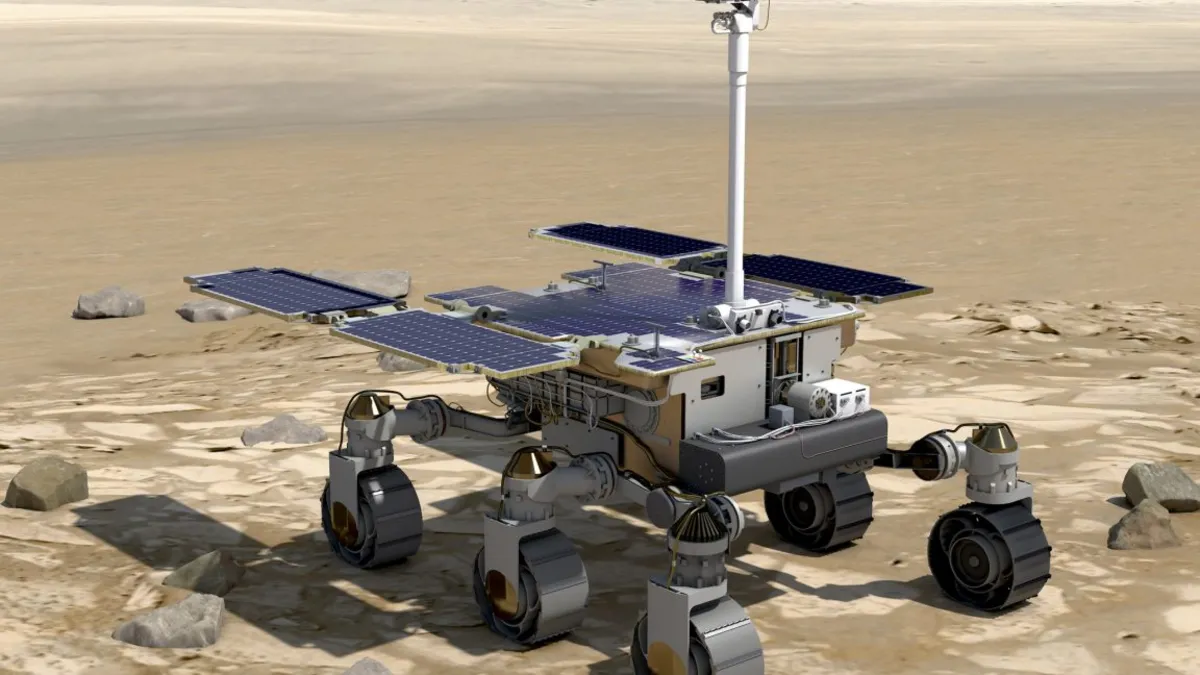
The ExoMars mission has been a saga of ambition, challenges, and unexpected twists. As Europe’s third attempt to successfully land on Mars, this mission represents a significant investment of over $1.3 billion, highlighting the immense stakes involved. However, with a history marred by geopolitical tensions, budget cuts, and shifting mission frameworks, the success of ExoMars remains uncertain. Recently, an announcement revealed that Airbus will design and build the lander to carry ExoMars down to the Martian surface. The mission is now slated for launch no earlier than 2028, using a US rocket. Given the numerous developments surrounding ExoMars, the path forward remains unclear.
It has been nearly two decades since the European Space Agency (ESA) made a formal commitment to the ExoMars mission during a ministerial meeting in December 2005. Initially, the plan was to launch ExoMars in 2011 aboard a Russian Soyuz 2-1b rocket. NASA was also set to play a role by contributing an exobiology instrument, data relay services from an orbiter around Mars, and technical support for the spacecraft's design.
As discussions between ESA and NASA evolved in 2008 and 2009, the choice of launch vehicle shifted to an Atlas V rocket provided by United Launch Alliance, a US-based company. However, plans once again changed as ESA partnered with Russia's Roscosmos, opting to launch ExoMars using a Proton rocket. In 2014, NASA withdrew its support for the mission due to budget constraints and cost overruns related to the James Webb Space Telescope, a decision that prompted European officials to strengthen their collaboration with Roscosmos, which became a major partner in the mission.
In addition to geopolitical challenges, the ExoMars mission faced significant technical obstacles. The initial launch date was pushed back from 2011 to 2018, and then again to 2020. Testing of the mission's parachutes in 2019 produced a series of failures, further complicating the timeline. By this point, NASA had begun to provide some technical assistance for the parachute development.
In March 2020, ESA officially confirmed another delay, moving the launch to the next available Mars window in 2022. The onset of the COVID-19 pandemic further exacerbated these challenges, postponing the mission once again. As the 2022 Mars launch window approached, the situation took another turn when Russia invaded Ukraine, leading European officials to reassess their partnership with Russia and ultimately terminate their collaboration on ExoMars.
The conflict in Ukraine inadvertently strengthened ties between Europe and the United States, particularly in the realm of space exploration. Following the termination of the partnership with Russia, NASA agreed to contribute a rocket, an engine for the descent module, and radioactive heating units for the mission. This renewed collaboration marked a significant revival of the ExoMars mission, with European officials expressing gratitude for NASA's timely assistance.
In recent news, the European Space Agency has announced that Airbus will take on the responsibility of designing and constructing the landing platform for the ExoMars mission, which includes the Rosalind Franklin rover. This will encompass the landing structure, the propulsion system for the final descent, and stabilization gear for the lander. Kata Escott, managing director at Airbus Defence and Space UK, emphasized that successfully landing the Rosalind Franklin rover on Mars represents a monumental international effort and the culmination of over 20 years of work.
Despite these recent advancements, uncertainty still looms over the ExoMars mission. Airbus is now tasked with building the third iteration of a lander for this project, and further delays remain a possibility. Previous European landing attempts, including Beagle 2 in 2003 and Schiaparelli in 2016, ended in failure, underscoring the complexities involved in this endeavor. The 2028 Mars launch window will open in December of that year and extend into early 2029, but the future of ExoMars could be influenced by shifting priorities within the US space program.
As the Trump administration pushes NASA's focus toward Mars exploration, the introduction of SpaceX's Starships may complicate matters for ExoMars. SpaceX aims for a 2026 launch window for Mars, with potential Starship missions targeting late 2028. This raises the question: will NASA decide to halt ExoMars in light of redundancy with upcoming Starship missions? With the ExoMars program, one thing is certain: expect the unexpected.